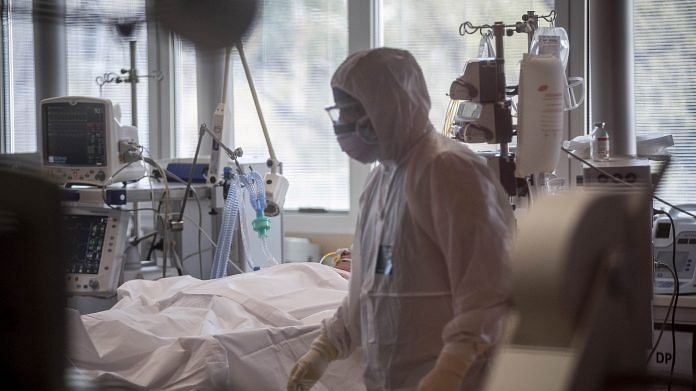- Architects have designed intensive care units built inside shipping containers.
- These mobile hospitals could help ease pressure on health systems.
- The team behind CURA wants to scale rapidly to tackle the spread of COVID-19 in Africa.
An Italian design company has teamed up with the Massachusetts Institute of Technology to create prefabricated intensive care units (ICUs), to deal with escalating numbers of coronavirus patients around the world.
Coronavirus patients with access to hospital equipment, in particular ICU beds, have a much greater chance of survival. With 377,431 confirmed cases of COVID-19 on 24 March, health systems around the world are groaning under the strain.
Carlo Ratti Associati and the MIT Senseable City Lab are looking to address this growing need with ICUs built inside shipping containers, which can be joined together to create mobile field hospitals.
They have teamed up with engineering firms, logistic experts and medical equipment suppliers, as part of a non-profit effort, to create the Connected Units for Respiratory Ailments, or CURA. These are designed to be as quick as a tent to put up, but as safe as a hospital with “biocontainment” – a series of safety practices to prevent the spread of disease.
The structure is quick to assemble and disassemble. Because it is made of shipping containers, it can be moved from epicentre to epicentre by road, rail and ship, within countries and from city to city around the world.
Also read: AI identifies potential drugs and a DNA vaccine in the works — latest on Covid-19
There is no international standard requiring a set number of hospital beds per thousand of population, so there are huge differences between countries.
There is even more variation when it comes to ICU beds per 100,000 inhabitants. Italy, which has suffered the deadliest outbreak of the disease with almost 64,000 cases, has 12.5 critical care beds per 100,000 people; compared with Germany, which has 29.2.
Once people are admitted to hospital, coronavirus patients require intensive and lengthy treatment, meaning beds are tied up for a number of weeks. Doctors in the north of Italy say that 70% of their intensive care unit beds are now reserved for coronavirus patients with “a reasonable chance to survive”. Older patients “are not being resuscitated and die alone”.
Scientists in London have used data from the Chinese epidemic to calculate the impact on the UK’s National Health Service. They estimate that the UK will need 200 beds per 100,000 people in the population. At the moment there are just under seven per 100,000.
Outside of Europe, preparations are being made to shore up fragile health systems in Africa, which could be overwhelmed if the disease takes hold there.
Alice Charles, Lead, Cities, Infrastructure & Urban Services at the World Economic Forum, which is supporting the project, says: “We are most concerned about the spread of coronavirus to densely populated urban areas in the global south, particularly in Africa where the trajectory for the first 40 days looks much worse that Europe. Hence we believe a solution of this nature needs to get to scale as soon as possible.”
Also read: Coronavirus: Latest updates on cases in India, all you need to know about COVID-19






